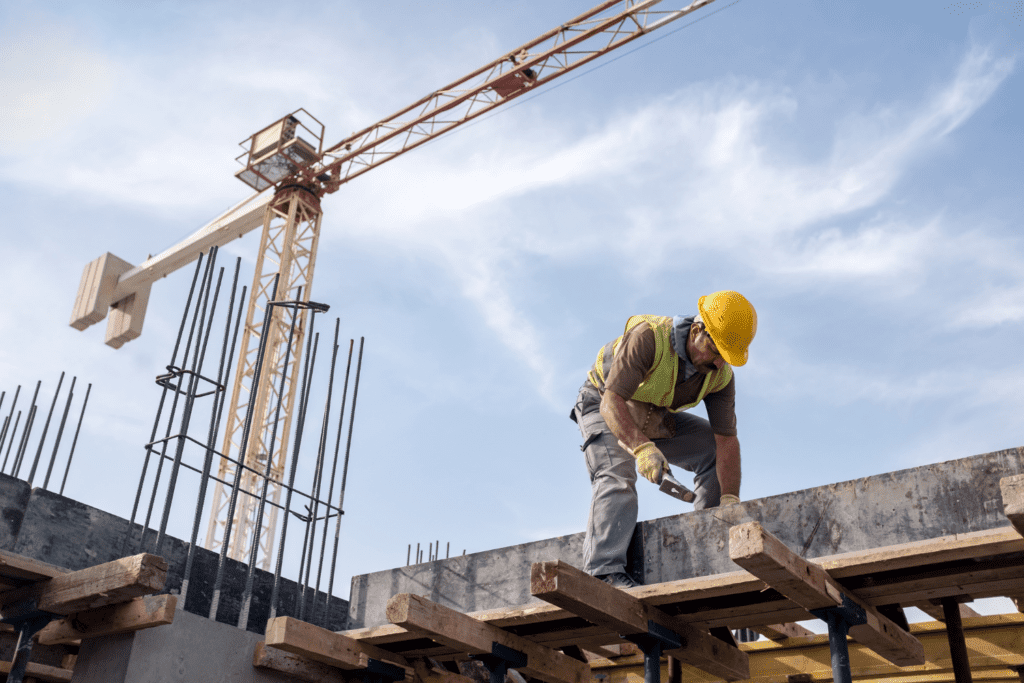2021 brought a number of challenges to the construction sector. Contractors experienced material shortages and price increases due to COVID-19. Looking forward, here are the key construction industry trends 2022 will bring.
Let’s take a look at the top construction trends to look out for in 2022.
Pressure on the bottom line
Although construction turnover has increased in recent years, net profits in the industry remain slim.
According to Deloitte, construction earnings before interest and tax account for 5.5% of a company’s sales — which leaves little wiggle room for any unplanned expenses.
The cost of building materials, such as concrete has gone up.
With the price of materials increasing in 2022, companies need to look at areas that can be optimised to save money.
Whether this is negotiating prices with suppliers or introducing automation, companies need to be efficient to succeed.
Smart cities
Smart cities can be defined as “high-tech intensive” urban developments that connect people, data, and city elements to improve a city’s:
- Eco-friendliness.
- Economy.
- Quality of life.
As smart cities become more common, it will change the structure of projects, making them more complex.
Two-thirds of the world’s population is predicted to live in cities by 2050, so the need for smart, sustainable cities is obvious.
Sustainability plays a factor in this by:
- An increased emphasis on public transportation.
- “Smart roads” that reduce road vibrations and, in turn, fuel costs and emissions.
- Waste management, which includes using smart bins and data for more efficient rubbish collection.
- Connected sensors that measure air quality, traffic flow, noise levels, and energy.
New construction materials
To maximise profits and be sustainable, construction companies need to:
- Reduce building material costs.
- Source cost-effective, sustainable building materials.
Because of this, these building materials are trending in construction:
- Engineered Cementitious Composite (ECC). It can be bent without breakage. ECC contains small, polymer-derived fibers that make it much stronger and crack-resistant than traditional concrete.
- Engineered timber — which refers to timber products that are created by bonding several types of softwood. The result is a lumber material that is strong enough to be used as a replacement for steel and concrete.
- Recycled materials. Using recycled materials isn’t new. But considering the issues discussed above facing construction companies, recycled materials are now being used to construct entire structures.
Modularisation and prefabrication is also used to reduce building costs. By adding a module assembly yard to a site, materials can be fabricated and assembled on-site, reducing material and shipping costs.
Declining workforce
A shortage of workers is nothing new.
Even though the demand for construction services has increased in recent years, the number of labourers hasn’t.
Deloitte has found that since 2014 construction job openings increased by 50% while the number of new hires was only 14%.
The labor shortage poses real risks to a company’s ability to take on new projects.
How can this key be handled? By investing in human resources.
With the number of construction workers declining, companies need to do more with fewer labourers. Using more construction equipment and automation are ways to maximise productivity.
Another way to tackle this challenge is to invest in your team. Here are a few ways construction companies can do this:
- Creating training programs and apprenticeships.
- Offering bonuses and performance-based incentives.
- Paying competitive wages.
Tech & Digitalisation
With labour shortages and reducing profits, tech in the construction industry enables increased productivity, efficiency, and safety.
This includes
- Robotics like mechanical arms that perform repetitive tasks like brick-laying.
- Self-driving construction vehicles.
- Drones for inspections and land surveying.
- The use of AI and simulations in collaborative building design.
- Wearable sensors to monitor worker safety.
- Smart project management like cost tracking software, job scheduling and budgeting tools to reduce expenses and save time.
Tech has disrupted every industry, so it’s no surprise that the construction industry is next.



